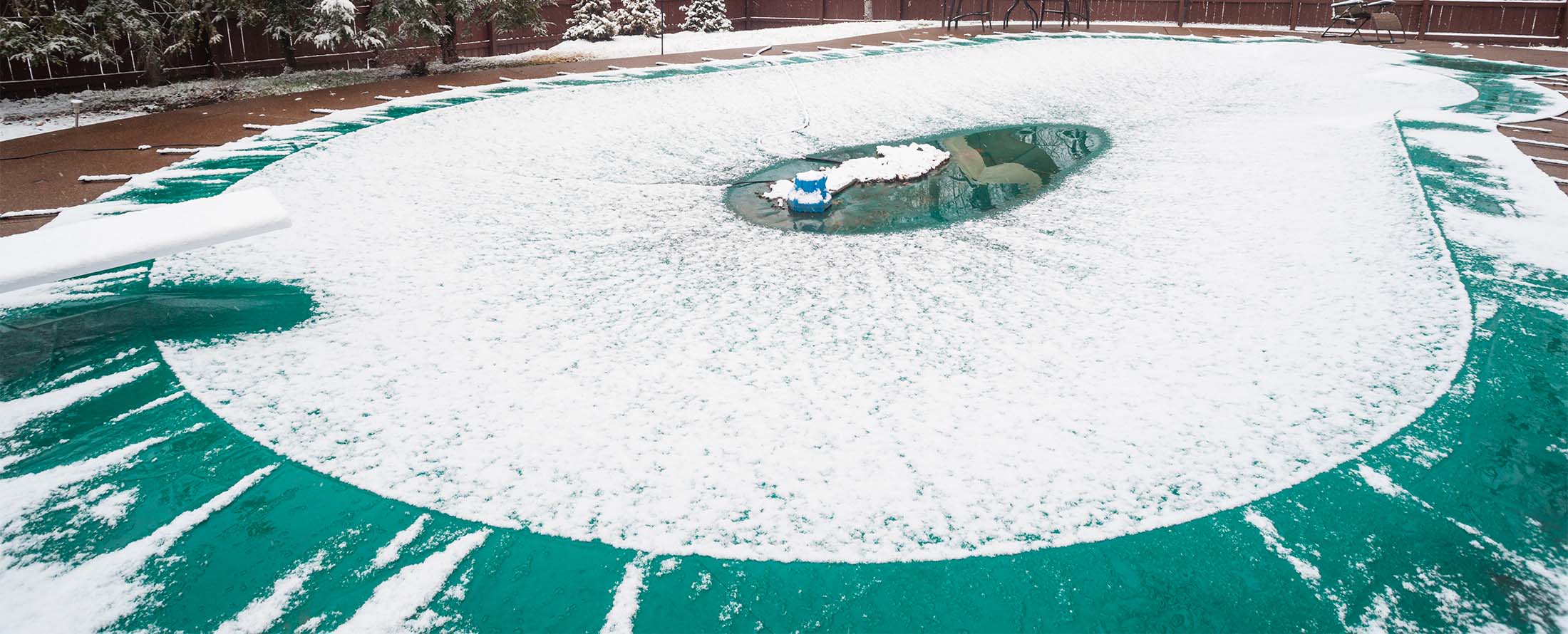Choosing the Right Pool Cover for You
Choosing a pool cover to fit your family's safety and practicality needs is a big decision. Pool covers are designed for all sorts of needs and budgets. Several covers are constructed for the safety of children and pets to prevent drowning, while others are made to keep out debris or automatically cover your pool for you.
If you have a child or live in a neighborhood with many young children, you might decide to go with a cover that promotes optimum safety. In turn, if you live alone and are the only person available to remove the cover, choosing one that does not require extensive effort will be important. With all of these options at various price points, which is the right choice for your pool?
Let’s take a look at the benefits and shortcomings of some of the most popular styles on the market.
Automatic Covers
The most expensive of the options covered here is the automatic pool cover, which is intended for consumers willing to pay more for maximum safety and minimal maintenance.
Often the easiest to operate, automatic pool covers can be taken off and put back on by one adult with the push of a button, whereas most other pool covers require two or more adults to maneuver.
Aside from the hefty price tag, the downside to these covers is that they are not a practical choice for all pools. Generally speaking, automatic pool covers are only available for rectangular and square pools. Automatic covers for oval, circular and other uniquely shaped pools are very rare and come with a high installation and customization costs.
Solar Pool Covers
Solar covers are one of the most common types of covers, making them often the least expensive option. Their unique appearance allows them to trap heat to warm your water, while protecting your pool from unwanted debris. This design can help you spend less on your monthly bills and create a smaller eco-footprint.
While solar covers often require two people to handle, they are still easier to refasten than other popular covers. But, unless your solar cover is specifically a safety cover, these can be more likely to cause entrapment than other covers.
Standard Tarp Covers
A basic cover made from woven polyethylene material, standard tarp covers are used by many pool owners when the temperature drops after the summer season. The density of the interwoven polyethylene strips gives the cover its strength and weight, enabling it to block out UV rays effectively to help fight against evaporation and inhibit algae growth.
Though good for keeping leaves and debris out of winterized pools, a key downside is that the cover can only handle a small amount of weight and runs the risk of collapsing into the pool if too much water is retained on its top. Additionally, similar to solar pool covers, there can be safety concerns associated with standard tarp covers as they provide no additional security or safeguards against accidental injuries.
Safety Covers
Pool safety covers are intended to provide a secure barrier to prevent toddlers, infants or pets from entering or falling into the pool accidentally. Though not designed or intended to keep out debris or serve as a seasonal cover, pool safety nets generally prevent leaves and small tree branches from entering the pool. Safety nets are anchored to the sides of the pool and need two adults to be secured. While pricing varies on the size of your pool, safety nets are an affordable option to promote optimum safety around your pool.
Security covers come in two styles, using either mesh or solid materials. Strongly constructed with an anchor system used to hold more weight, both are designed for long-term use and require very little maintenance.
The material on the mesh pool cover is what makes it an appealing option for pool owners. Debris is easily blown off the top, while rain and snow simply drain through the mesh panels. Additionally, this material doesn’t allow puddles to form on top of the cover, as they’re anchored to the ground.
Likewise, solid safety covers block out debris, but also offer UV ray protection. Though you will need to pump retained water off of these covers just as you would with a standard solid winter cover, they can be purchased with features such as an automatic pump to remove standing water.
So, Which To Choose?
Every pool owner will need to choose the right cover for their own environment, but no matter what cover you decide to use for your own swimming pool, it is important to ensure you are considering the safest and most practical options for your family.
Safety covers can be used for the same purpose as winter covers, but with a host of additional advantages outlined above. As you gear up for the tough Chicago winter, we would be happy to recommend the right style or material that fits your budget and pool.
